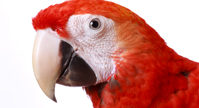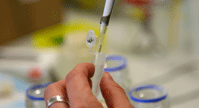Dun Dilution 1-2 "Primitive Markings"
Description:
 The dun gene is a dilution gene that affects both red and black coat color pigments. The gene is associated with "primitive marking" and has the ability to affect the appearance of all black, bay, or chestnut ("red")-based horses to some degree by lightening the base body coat.
The dun gene is a dilution gene that affects both red and black coat color pigments. The gene is associated with "primitive marking" and has the ability to affect the appearance of all black, bay, or chestnut ("red")-based horses to some degree by lightening the base body coat.
The dark stripe down the middle of the animal's back is the most recognizable marking associated with dun horses. Other markings include a darker tail and mane, as well as a darker face and legs. The classic dun is a gray-gold or tan color, characterized by a sandy yellow to a reddish-brown body color. Depending on other underlying genetic coat color factors, a dun horse may appear as a light yellowish shade or a steel gray. Manes, tails, primitive markings and other dark areas are usually the shade of the non-diluted base coat color. Many dun horses are mistaken as buckskin horses.
The Dun allele is dominant, meaning that a horse that carries either a single copy (heterozygous – D/d) or two copies of the gene (homozygous – D/D) will develop the dun colorations. Dun is unlike the silver dapple gene, which affects only black-based coats; or the cream gene, an incomplete dominant gene that requires two copies in order to be fully expressed. The dun gene affects both black and red-based horses.
The dun dilute gene is characterized by markings which are darker than the body color. These markings include:
- Dorsal stripe (a stripe down the center of the back, along the spine). These are seen almost universally on all duns.
- Horizontal striping on the back of forelegs. These common on most duns, though at times rather faint.
- Shoulder blade stripes. The least commonly seen of the primitive markings.
Breeds
Quarter Horses, Paints, Appaloosas, Icelandic Horses, Norwegian Fjords, Paso Finos, Peruvian Pasos Bashkir Curly, Iberian, Mustang and many pony breeds
| Base Coat | Common Coat color | |
|---|---|---|
| Red (chestnut) base | + Dun gene | Red dun |
| Black base | + Dun gene | Blue dun, mouse dun or Grullo/Grulla. |
| Bay (black base + Agouti gene) | + Dun gene | Classic dun, sometimes called "Bay dun" or "Zebra dun" |
Animal Genetics identifies 2 mutations of the TBX3 gene responsible for Dun dilution and primitive markings and presents results as one of the following:
| D/D | 2 copies of Dun. Horse will have Dun dilution and express primitive markings. Dun will be passed on 100% of the time. |
| D/nd1 | 1 copy of Dun and one copy of nd1. Horse will have Dun dilution and express primitive markings. Horse can pass on Dun dilution or primitive markings without dilution. |
| D/nd2 | 1 copy of Dun and one copy of nd2. Horse will have Dun dilution and express primitive markings. Horse can pass on Dun dilution with primitive marking 50% of the time. |
| nd1/nd1 | 2 copies of nd1. Horse will not be Dun diluted. Varying levels of primitive markings are present. Horse will pass on nd1 100% of the time. |
| nd1/nd2 | 1 copy of nd1 and one copy of nd2. Horse will not be Dun diluted. Varying levels of primitive markings are present. Horse will pass on nd1 50% of the time. |
| nd2/nd2 | Non Dun |
Submit a Sample for Testing:
To submit a sample for testing please click on ORDER and download a sample submission form. Then follow the sample collection and submission instructions.
Cost per sample is $25.00. Please see our Equine Fee Schedule for all equine testing rates.










